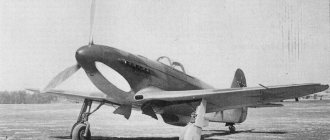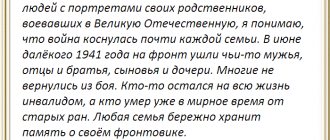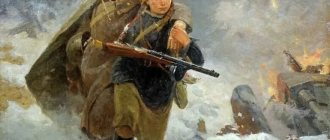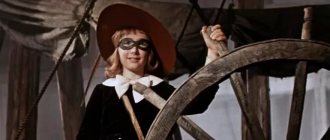- 63047
- Academy of Winners
Great people
The navigator James Cook is one of the most famous explorers of the World Ocean of the 18th century. He completed 3 circumnavigational sea voyages, during which he mapped little-known and rarely visited parts of Newfoundland and the east coast of Canada, Australia, New Zealand, the west coast of North America, the Pacific, Indian and Atlantic oceans.
James Cook's maps were so accurate that all sailors used them until the mid-19th century. All this is thanks to his painstaking and accurate cartography.
short biography
The “sea” part of life began for the son of a farm laborer, James Cook (1728–1779), when he joined a ship transporting coal as a cabin boy. After gaining some experience and job offers over time, he no longer wanted to sail on merchant ships, but instead enlisted as a sailor in the Royal Navy.
Persistent study, reading books, and a passion for sea travel led to the fact that he quickly advanced through the ranks, participated in many military campaigns, battles, but not only that. His duties included drawing up maps of the coast, which ultimately led to the fact that James Cook was entrusted with leading several expeditions around the world, which were organized by the English Admiralty.
The name of D. Cook is now mentioned on the world map a large number of times, and this is completely justified and deserved. After his several expeditions in the vastness of the Pacific Ocean, there were no longer any fundamentally unresolved issues, with the exception of the mysterious southern continent, which Cook searched to no avail. During his third trip around the world, Cook was killed in one of the skirmishes with the natives in Hawaii. This happened on February 14, 1779.
Tahiti, New Zealand and other unexplored lands
However, some non-commissioned officer cannot lead the expedition. Cook gets his real moment of glory. The son of a poor peasant becomes an officer. No patronage, no luck. Cook earns his rank and position solely through unconditional professionalism and hard work. The arrogant officials of the Admiralty for several years ignored the parvenu, more qualified than almost any officer, but descended from some Scots farmhand. Now they are literally capitulating to unyielding will and professionalism.
The route of the expedition lay in Tahiti. Paradise climate, convenient parking, accommodating natives. In addition to astronomers, work was also found for botanists and even artists taken on the expedition. The situation was complicated only by the specific ideas of the natives about property. The Tahitians quickly got used to the ships and began to drag whatever they could get their hands on. Cook managed to put the naive natives in line without resorting to violence. Things were confiscated, but the locals were quickly explained that if they needed something, they needed to notify them of their desire to make an exchange. Almost no violence, robberies, murders - an extremely rare case by the standards of that time. By the way, this strategy was simply beneficial: the natives did not create problems for the scientists, on the contrary, they helped in every possible way. This is not to say that the idyll was complete: once a sentry shot a native who had pulled a gun. On another occasion, Cook detained local leaders after two sailors deserted along with local girlfriends, leaving a farewell note for the captain. The deserters were quickly returned.
A remarkable fact: during the entire expedition to Tahiti, Cook did not lose a single person from scurvy, and in general, illness was extremely rare on his ship. Properly organized nutrition, hygiene and strict adherence to discipline gave amazing results. The flip side of the clear organization of the campaign was strict discipline. Cook used the whip and shackles without the slightest hesitation: the charter not only allows, but also orders the use of power! However, the sailors knew for sure that, working tirelessly with the whip, their captain never used it in vain: strictness here was the key to the efficient work of all team members in an acute situation.
Cook's tasks went far beyond astronomical studies. The southern continent remained one of the last large white spots on the world map. It was assumed that in the southern part of the globe a large unexplored continent with a temperate climate could be found. Even during the training camp, Sir Alexander Dalrymple, one of the fanatical adherents of the version of the existence of the continent, tried to lead the expedition instead of Cook, but he was rather rudely pulled back by naval officials, saying that a professional sailor would command the expedition. Cook's ship Endeavor quickly reaches New Zealand, but it is now unclear whether the outlines of a new continent have appeared ahead or whether it is just an island.
Cook was the first European to set foot on the shores of New Zealand. However, these islands were not at all like hospitable Tahiti. The Maori aborigines did not show friendliness for a second, and one of them tried to snatch the officer’s sword. Shots, blood - no attempts by the sailors to establish contact could now be crowned with success. The ship moved along the coast, and everywhere the Maori tried to engage in battle if the British came too close to the shore. Nevertheless, even the very fact of sailing was enough to draw the conclusion: New Zealand is a group of islands. The hypothesis about the southern continent was crumbling before our eyes.
In search of the Southern Land: three expeditions and a whole life
When the British Admiralty decided on an expedition to the Pacific Ocean, Cook was already a good experienced sailor, tested in military campaigns and had an excellent reputation in drawing maps. The ship under the command of Captain Cook, the Endeavor, sailed from Plymouth in 1768.
The ship "Endeavor" in the bay of one of the Friendship Islands (now Tonga)
Sadly, most of English maritime exploration was carried out under pirate and privateer flags, with the goal of conquering not so much new lands as gold reserves transported on enemy ships. The senseless concealment of voyages and discoveries of new lands led to the fact that many powers repeated the “discoveries” of their rivals, but did not move further in their research. It was important for each country to be “the first to discover” some part of the world, or an island, or a coast, but the sailors did not know that before them these lands and countries had already been discovered and populated, and real discoveries were still ahead: not all of the waters were yet oceans were visited by Europeans.
The expedition led by James Cook was no exception: its plans included astronomical observations of the position of the planet Venus, but behind the scenes the long journey implied the discovery of the “extreme southern land,” the possibility of whose existence had been talked about for a long time. To quickly achieve this goal, when stopping on numerous islands, it was prescribed, contrary to tradition, not to capture and exterminate the local native population, but to try in every possible way to enter into negotiations with them, to try to establish friendship.
First scientific expedition
When the English government in 1768 , the choice fell on the famous hydrographer Alexander Dalrymple. But he made such demands that the Admiralty refused his services.
Among the proposed candidates was the experienced sailor James Cook. He led the three-masted sailing ship Endeavor to search for new lands. At that time he was 40 years old. Cook's first voyage lasted from 1768 to 1771.
A difficult journey lay ahead across the Pacific Ocean towards the southern latitudes. His crew consisted of 80 people, and the ship was loaded with food for the 18-month journey. He took with him 20 artillery guns as weapons. Astronomers, botanists, and doctors went with him.
Secret mission
Scientists were going to observe the passage of the planet Venus against the background of the solar disk. But Cook had another secret mission - he had to find the Southern Continent (Terra Australis), which was supposedly located on the other side of the Earth.
The fact is that the English Admiralty had at its disposal Spanish maps of the 17th century, on which islands located in the Southern Hemisphere were plotted. These lands should have been annexed to the British crown. Captain James Cook and his crew were strictly instructed to treat the Aborigines with respect and not to carry out any military actions against them.
The sailing took place on August 26, 1768 from Plymouth. The course was set for the Tahiti archipelago, from which the ship Endeavor began to move further south, where Cook soon discovered New Zealand. There he stayed for 6 months and became convinced that this island was divided into two parts. Then he managed to approach the east coast of Australia. This was the end of his first expedition; he had to return to his homeland.
D. Cook's first voyage (1768–1771)
The Endeavor, a ship of the English navy, was strong enough and suitable for a long journey. Cook, leaving England, crossed the Atlantic, rounded Cape Horn and headed towards Tahiti. During the voyage, the captain tried to deviate to the south as much as possible in order to perhaps see at least the edge of the desired “southern land,” but this did not happen (at that time the most southern part of the land was Australia, then called New Holland). The southernmost land encountered on the expedition's route were the islands of the New Zealand archipelago. They were considered a possible part of the “unknown southern land” that almost all sailors dreamed of finding. But Cook bypassed them on his ship, confirming that these were just islands and not the mainland. As a result, the expedition carried out a topographical survey of the islands of New Zealand, separated by the Strait now named Cook, crossed the Tasman Sea and set off along the coast of Australia to the north. It must be said that few navigators managed to make so many discoveries and detail so many coasts, create so many maps and do this without significant losses among the crew (during the long voyage on Cook’s ship there were practically no cases of scurvy - the scourge of sailors of that time) . However, during this voyage there were many amazing and dangerous events.
Ceremonial dances of the Australian Aboriginals. Drawing by J. Krefft. 1858
Unlike his predecessors, Cook decided to go north off the easternmost coast of Australia, constantly observing a strip of dangerous reefs from the east. It was one of the wonders of nature - the Great Barrier Reef, stretching along the eastern shores of the continent. At the end of the journey, the distance between the shore and the reefs became so close that the captain barely managed to navigate the ship along a safe path (the fairway). Having not avoided some breakdowns and patched up his ship, Cook confirmed that there was a strait between New Holland (then called Australia) and the next land (the islands of New Guinea), i.e. they were not connected anywhere. This place was called Torres Strait (or Torres Strait), but Cook managed to navigate it even more southerly than Torres himself, who was the first European to open this route. From here, across the Indian Ocean, the Endeavor sailed home to England. And this expedition alone would be enough to immortalize Cook’s name both in history and on maps. But there were new sea voyages ahead.
J. Cook's expedition route
“Above the bow ... there are platforms where soldiers stood in full armor. The oarsmen sat below between the pillars supporting the platforms, one person per pillar. Thus, these platforms were adapted only for combat. Vessels for transporting food supplies are much smaller and do not have platforms. On large ships there were forty people, and on small ships - eight.” J. Cook about military courts in Tahiti
Kalanioru, Hawaiian ship. Drawing by W. Hodges, member of Cook's expedition
Maori, aborigine of New Zealand. Drawing from Cook's diary
W. Hodges. Tahitian chief
Cook's second circumnavigation (1772–1775)
This time Cook became captain of a flotilla of two ships: Resolution and Adventure. During this voyage, Cook went even further south and crossed all the oceans (this was a real trip around the world) above the 40th latitude, about which there were bad stories. In both hemispheres, these places were called the “Roaring Forties,” referring to the violent storms that hit ships. Moreover, Cook crossed the latitude of the Antarctic Circle twice. By the way, Cook did this for the first time in the history of mankind; no one had ever sailed so close to the South Pole before him. Let us recall that only 50 years later the ships of F. Bellingshausen and M. Lazarev managed to come closer to Antarctica and see its shores. But Cook, although he maneuvered his ships among the icebergs, did not encounter any land there. As can now be assumed, this indeed happened by an unfortunate accident, since the Antarctic Peninsula of Antarctica is located north of the Arctic Circle in a place where Cook had not been, namely opposite Cape Horn, the southern tip of South America.
South coast of Tahiti, temporary base of Cook's expeditions
Not finding the southern continent, Cook sent the ships north to the tropical latitudes of Oceania. There were several reasons for this: it was still not possible to avoid scurvy, in addition, the plans included studying the waters and islands near New Zealand (at that time these places were a real “blank spot” on the maps).
Having reached Tahiti, the captain and crew replenished their supplies with fresh food and fruit. This always had a good effect on the sick, because the tropical fruits contained a lot of vitamins - this was exactly what the organisms, exhausted by monotonous dry food, needed. In addition to fresh fruits, pigs were also purchased. Continuing his voyage, Cook visited several more islands of Oceania. The natives were not everywhere friendly, although the captain maintained the most courteous and friendly tone when communicating with them. Observations of the life and customs of the islanders left conflicting impressions on the sailors: on the one hand, they even witnessed scenes of cannibalism among the local residents, on the other hand, they could not help but note, in general, their peacefulness. “...I must say that although they are undoubtedly cannibals, they have a naturally good disposition and humanity,” Cook wrote in his diaries. Numerous observations of the life of the local population, native household items, and sketches made from life were subsequently transferred to the Royal Geographical Society.
“I was obliged to make every effort to open up new territories in the south, going either east or west, at my own discretion. At the same time, it was necessary to stay at the highest latitudes and sail to the south pole as long as our supplies, the health of the crew and the condition of the ships themselves allowed. Under any circumstances it was necessary to have on board a reserve supply of food sufficient for a safe return to their homeland in England.” J. Cook
The ships separated. Cook remained at Resolution. But they waited in vain for the second ship in the intended bay off the New Zealand islands. It subsequently turned out that several sailors and a boatswain from the second ship were killed by local residents. As Cook later found out, most likely the British themselves provoked the quarrel and attack.
A native of the Sandwich (now Hawaiian) Islands
Handle of a Tahitian fan, a symbol of prestige in the Polynesian islands
Cook tried several more times to penetrate the waters of the Southern Ocean in search of land, but was unsuccessful. “... I can safely say that not a single person will ever dare to penetrate further south than I did. The lands that may be in the south will never be explored."
Cook's third voyage (1776–1780)
Cook had to set off on his last voyage on the Resolution, which he was already familiar with. The second ship of his flotilla was called Discovery. This time, England's intention was to take possession of any land the expedition encountered along the way. This time this path lay much further north: Cook and his ships should have joined the search for the Northwest Passage, that is, found a path from the Pacific Ocean to the Atlantic. The ships already traveled the well-known route across the Atlantic, around Africa, across the Indian Ocean and headed to New Zealand. Then they made a stop at the already familiar Tahiti and prepared for the goal of their voyage, a search off the coast of North America. On the way, they passed Hawaii, called the Sandwich Islands by Cook, and rose to the north.
J. Webber. Polar bear in Alaska
Indeed, Cook visited almost everywhere in the Pacific Ocean: his path this time was directed north, along the coast of America, to the Aleutian Islands and the Bering Strait. Had he visited even a quarter of the places, he would have been considered an excellent sailor and a great traveler. But he went further and further. Having passed the Bering Strait, he crossed the Chukchi Sea on his ship. "Resolution", thus, traveled above both polar circles: both the Northern and the Southern. The summer and autumn days were quickly passing, and Cook was faced with the question of wintering. Having learned from the Russian navigator G. Izmailov, whom he met on the way, that there was not enough food in Kamchatka and it was expensive, and in addition, not wanting to stay so far north for a long time, Cook decided to return to Hawaii, where he wanted to stay for a long time.
But it so happened that Cook remained in Hawaii forever. In late October 1779, in a chance skirmish with previously friendly islanders, Captain James Cook was killed. He was only 50 years old. Cook's body was thrown to the sea. Cook's people were forced to flee the island and reached home only a year later.
Death of Captain Cook on the Sandwich Islands
Shipwreck and illness
The sailors decided to return home in an intricate way - through the Dutch East Indies. This route was required in order to stock up on food. On the way there, Endeavor had to pass Australia. Walking along the coast, Cook indulged in his favorite activity: he continuously made maps and filled them with names. Everything was going great until one not-so-great day. The ship hit a coral reef.
Disaster: Endeavor crashed in a place where Europeans had never been before and where there was no point in hoping for help. Moreover, Australia itself is 20 miles away. The decision had to be made quickly and accurately; the slightest mistake meant death.
Cook doesn't lose his head. Everything that you can do without goes overboard. In total, 50 tons of supplies were thrown away, including even guns. Anchors are stowed in the longboat to pull the Endeavor off the reef if possible. The pumps work without interruption. However, what happens when the tide comes in and the reef disappears from under the keel?
The hole is covered with a “plaster” - a piece of canvas covered with tow. The Endeavor limped to the coast of Australia, where it stopped for several months for repairs. From there the ship departed without delay, stopping only at Batavia (present-day Jakarta).
In Indonesia, the ship was struck by the same misfortune that had spared it all many months earlier - an epidemic. The extremely unhealthy climate of these places brought dysentery to Cook's ship, and upon departure the Endeavor resembled a floating hospital. Having suffered almost no casualties so far, Cook lost 30 of his 80 men, having already emerged from unknown waters. However, nothing could stop James Cook. After sailing in the southern seas for three years, in the summer of 1771 he returned home.
And he faces a rather cool reception in high society. The heroes of the day are scientists. No one can dispute their merits, but the Endeavor crew is considered more like cab drivers. However, professionals from the admiralty, who saw the ships not only in the harbor, showered Cook with praise. And he himself immediately receives an offer to lead a new voyage to the southern seas and agrees.
The sea was the native element of this extraordinary man. As soon as he returns from a campaign, he immediately rushes to the next one. The preparation took a year. This time there are two corvettes under the command of Cook. Personal life is left behind. Cook even learns about the birth of his son already under sail, setting off from the harbor.
A new journey was again undertaken to search for the southern continent. From the Cape of Good Hope the ships headed south. There was neither the Tahitian idyll nor the sweltering heat of Australia. Icebergs were floating around. Cook crosses the Arctic Circle, but is unable to advance further: pack ice and majestic squadrons of icebergs prevent him from finding the continent. Cook found that, if there is a continent to the south, it is much smaller in size than previously expected. He had to limit himself to this. The captain did not reach the shores 75 miles, and the real discovery was postponed for almost half a century, when the existence of the continent was confirmed by the Russian expedition of Bellingshausen and Lazarev.
And the ships, not finding land, turned to the tropical seas.
Contribution to Geography
Cook was the first to come close enough to Antarctica, but did not see it. He crossed both the Southern and Northern Polar Circles many times. Discovered the Great Barrier Reef. Discovered the islands of New Zealand and the passage between them. Discovered the Hawaiian Islands. He mapped numerous islands and coasts, including the coast of Alaska. He traveled around the world twice in his life.
W. Hodges. Portrait of Captain J. Cook. 1775
Share link






